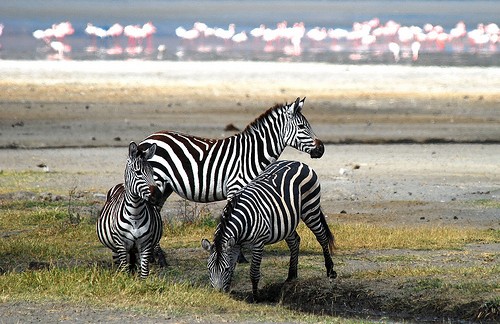Grevy’s Zebra Trust

Over the last 30 years, experts estimate an 84-87% decline in the world’s Grevy’s zebra population, with only about 2,000 left in the wild today. They are now only found in Kenya and Ethiopia. Their demise is attributed mainly to poaching (for meat), as well as the effects of domestic livestock on essential resources such as food and water. Disease and drought in northern Kenya has further accelerated their decline in recent times. The Grevy’s Zebra Trust was created in 2007 to stimulate conservation efforts for this imperiled species. The Trust contributed to a social movement that was born when Kenya Wildlife Service implemented a nation-wide conservation strategy in 2008.

The strategy leaves the responsibility of carrying out conservation efforts in the hands of stakeholders and envisions a goal that encompasses a healthy and viable future for the Grevy’s Zebra population. The Grevy’s Zebra Trust unites the conservation strategy with the people. The first step in the process was to identify the current status of the Grevy’s Zebra population and was executed by conducting a national survey. As part of the survey, the team was able to unite with IUCN’s Monitoring the Illegal Killing of Elephants (MIKE) program to conduct aerial surveys to count zebras while simultaneously searching for poaching activities. Ultimately, the results would provide the information necessary to identify key areas to target conservation efforts on in order to accomplish the goal of the strategy, and also provides a basis on which to evaluate the effectiveness of their endeavors.

Part of the survey involved gauging local pastoralist communities’ interactions with and knowledge of the zebras. The organization recognizes the value in educating these communities on the main issue and directly engaging them in their efforts. The Trust trains nomadic peoples how to recognize various biologic and ecologic variables of these animals. In so doing, these people become committed to data collection, protection, and appreciation for the zebras. They are also educated on alternatives to the use of these animals, improved livestock management that reduces competition and conflict with the zebras, and are encouraged to spread these messages to other communities. The integration of pastoralist communities into conservation efforts is critical to achieving the goals of the conservation strategy. Though a young organization, the Grevy’s Zebra Trust is already making enormous strides in ensuring the future of this endangered zebra species.

To learn more, visit their website

